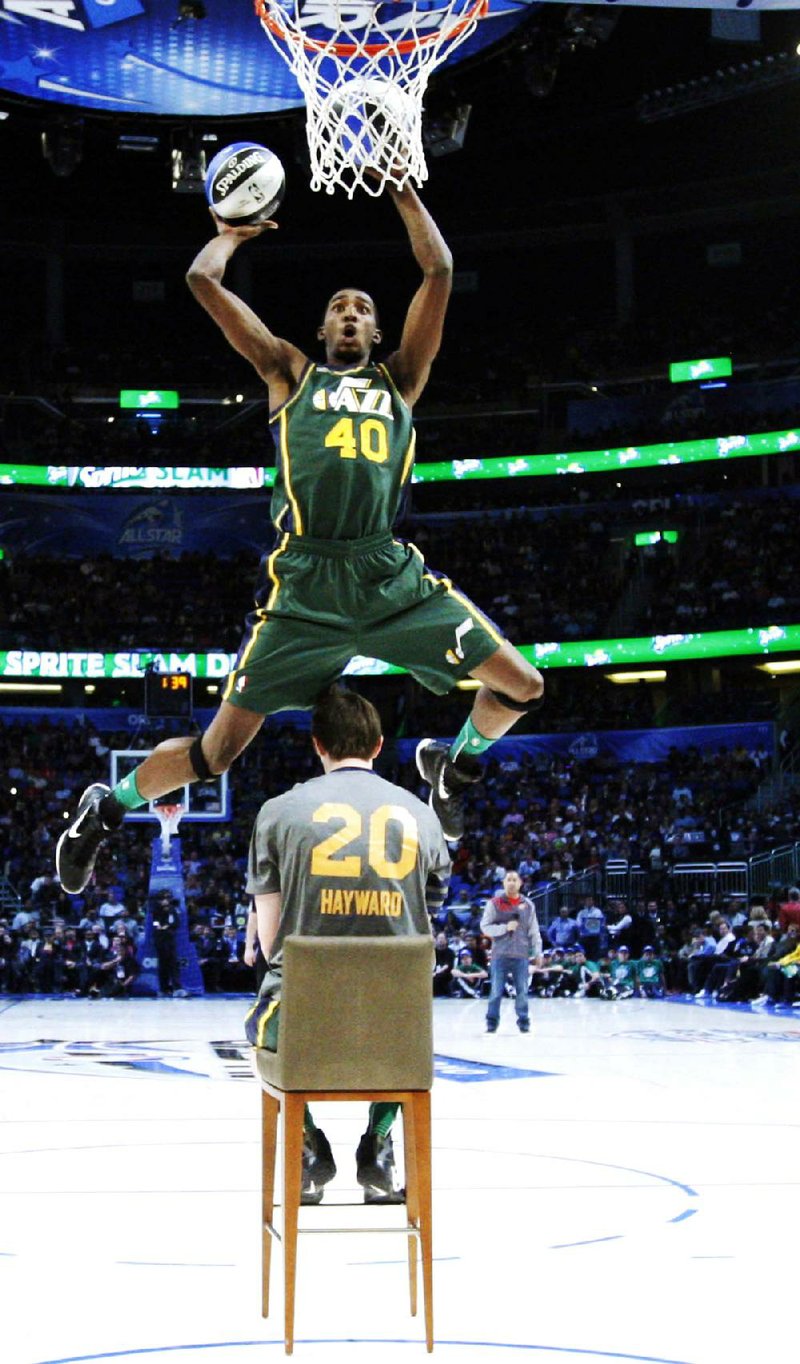LITTLE ROCK — Why are there so few dunks in women’s basketball?
Leaping ability.
The average Women’s National Basketball Association player, at just under 6 feet, is about 7 inches shorter than her male counterpart. (Average data for all collegiate female players isn’t available.) Height is only part of the problem, though - plenty of 6-foot male players can dunk. The male/female gap in vertical leaping ability is also substantial. The average female college basketball player has a vertical leap of approximately 19 inches, compared with more than 28 inches for the average male player.
Since you have to get your fingers about 6 inches above the rim to have a chance at dunking, a female player of average leaping ability would have to be about 6-foot-6 with a standing reach of 8-foot-11 - the approximate measurements for Michael Jordan.
(His Airness reportedly had a 48-inch vertical leap.) Few female players are that tall, and none of those giants are exceptional leapers.
Still, the paucity of dunks during women’s games gives a slightly false impression of female dunking ability. Dunking in practice is somewhat more common, but many coaches advise against attempting a rim-rattler when it counts, because of the risk of injury or throwing away an easy score. The late Oklahoma State University coach Kurt Budke, for example, forbade forward Toni Young from dunking after she broke her arm in three places while completing one during practice in 2011.
The male/female gap in leaping ability is wide at every level of competition. According to a 2004 study of medical students and their spouses, the average male in his 20s can out-jump 95 percent of females in the same age group.
And men seem to have a peculiar advantage in jumping compared with other athletic pursuits.
According to a study of world records for track and field events as of 2004, men had a 15 percent to 16 percent advantage in high jump, long jump and triple jump. The male/female gap in running events was only 10 percent to 13 percent. The difference between men and women has been relatively stable since 1983.
Researchers are still working out why men can jump so much higher than women, on average, but it clearly starts in puberty. Boys experience a spurt of muscle growth during the hormone surge, and their vertical leaping ability increases accordingly. Girls, in contrast, lose takeoff force during puberty.
In addition, some studies have suggested that men have a higher ratio of fast-twitch to slow-twitch muscle fiber, which provides a substantial leaping advantage, although these results are questionable. The male physiology also seems to be more efficient at recruiting all the necessary muscles to work together to accomplish a task. That means a man could typically out-jump a woman who had the same muscle structure.
There’s hope for girls who dream of playing above the rim. Historically, pediatricians and trainers have cautioned against serious athletic training in young children. They feared that weightlifting would close growth plates or cause muscle tears. But researchers increasingly believe those concerns are overstated and that girls can significantly narrow the gap in leaping ability that opens up during puberty through moderate resistance training before and during the period of hormonal changes.
Among sources for this story were David Patterson of A.T. Still University-Kirkman College of Osteopathic Medicine and Carmen Quatman of Ohio State University.
ActiveStyle, Pages 23 on 04/09/2012

